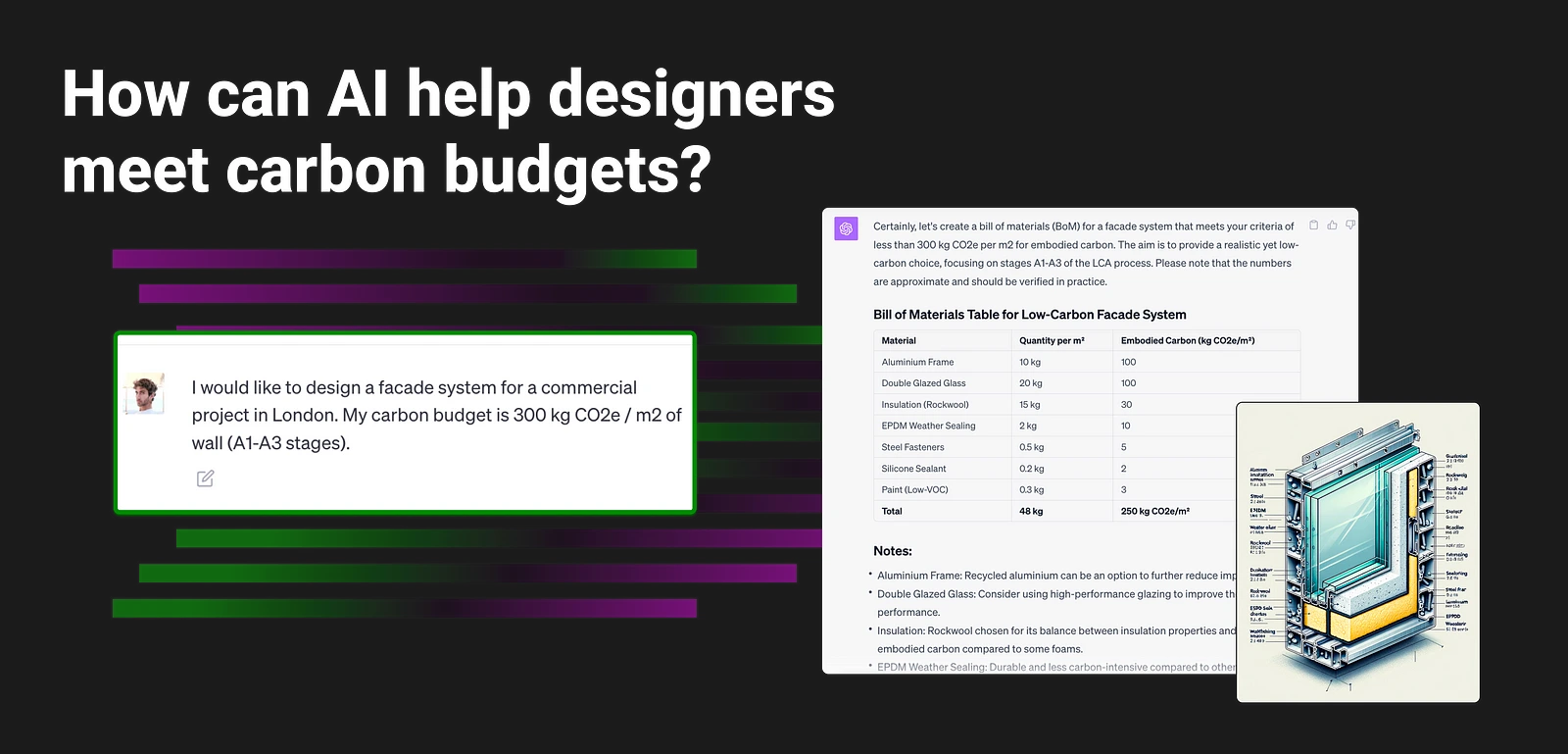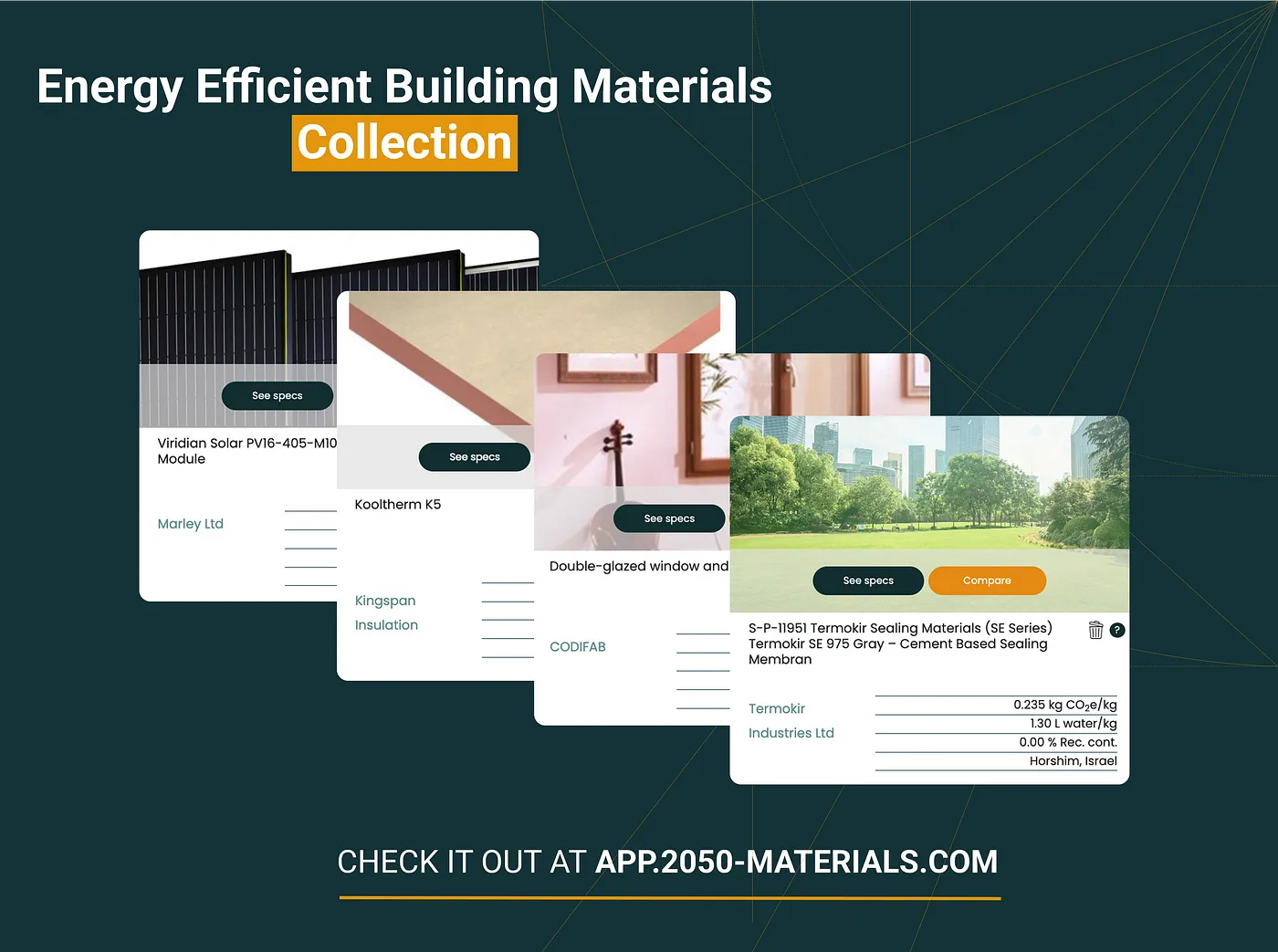A Case-Study to test ChatGPT’s ability to help architects meet climate targets

Climate change is no longer a future threat; it’s a present challenge that sectors like construction need to address urgently. While designing low-carbon buildings has become imperative, it’s often a complex and time-consuming process.
But what if an AI language model could speed up the journey towards sustainability and help us meet climate targets? Enter ChatGPT and its potential to help you meet your carbon budgets in minutes.
The Power of LLMs in Interpreting Natural Language
Large Language Models (LLMs) like ChatGPT are becoming increasingly adept at understanding and interpreting natural language. They can process complex queries and offer a range of solutions, just like they would in generating a bill of materials for a low-carbon facade system. By linking known information about material sustainability with specific carbon budgets, these models offer valuable insights into what’s feasible.
Fast-Tracking Sustainability Decisions
While LLMs like ChatGPT aren’t going to provide a final design, they offer something equally valuable: speed. In just a few minutes, they can inform designers about the realm of possibilities, showcasing combinations of materials and methods that could meet or even exceed sustainability targets. This initial guidance can have an enormous impact on a project’s overall carbon footprint, serving as a starting point for further refinement and engineering.
The Missing Piece: Structured and Accurate Data
The main caveat with LLMs lies in their data source: they don’t have access to structured and accurate sustainability data for construction materials. For instance, while ChatGPT can suggest using recycled aluminum to lower the carbon footprint of a facade system, it cannot provide the exact emissions data for a specific aluminum product.
A Real-World Case Study: Designing a Low-Carbon Facade
In a recent interaction, we asked ChatGPT to design a facade system for commercial buildings in the UK with a specific carbon budget: less than 300 kg CO2e per m2 of embodied carbon in LCA stages A1-A3. This was intended to test whether LLMs can help designers meet climate targets.
ChatGPT was tasked to create a bill of materials that met these criteria.
-
- Step 1:The model first worked backwards from the carbon target per m2. It identified a combination of materials — aluminium frames, double-glazed glass, Rockwool insulation, EPDM weather sealing, steel fasteners, silicone sealant, and low-VOC paint — that collectively stayed under the 300 kg CO2e/m2 limit. The entire process took just a few seconds, providing the user with a quick but insightful starting point for their facade system.
- Step 2: We took that table and integrated precise and real-time sustainability data from our database at 2050 Materials to cross-check and validate the design.
- Step 3: We corrected the errors and fed back a table of accurate data to the model, which it used to adjust it’s recommendation and provide a precive embodied carbon number per m2 of the facade system.
 This case study exemplifies how LLMs can quickly deliver actionable insights that bring us one step closer to meeting our climate targets.
This case study exemplifies how LLMs can quickly deliver actionable insights that bring us one step closer to meeting our climate targets.
Enter 2050 Materials
This is where specialized solutions like 2050 Materials come into play. With an API-first approach, 2050 Materials can seamlessly integrate accurate and up-to-date sustainability data into the digital design process, or such AI applications.
When combined with the initial insights from ChatGPT, this creates a powerful toolkit for designers, providing both the speed and the data accuracy needed to make informed decisions.
What next?
LLMs like ChatGPT offer an exciting opportunity to accelerate the construction industry’s move toward sustainability. They provide quick, actionable insights that can guide the early stages of design.
While they don’t replace the need for detailed engineering and precise data, they dramatically speed up the process of identifying low-carbon options. And with data solutions like ours at 2050 Materials, the future of sustainable construction looks more achievable than ever.
Related articles

The Most Interesting Low Carbon Products in Office Design
In this article and collection, we highlight 11 outstanding products that contribute to a lower carbon footprint in office design.
Read more
Top Low Carbon Building Boards: Performance, Benefits, and Use Cases
The building boards highlighted in this article and collection showcase low-carbon innovation in modern construction.
Read more
11 Interesting Energy Efficient Building Materials for Reduced Environmental Impact
Discover a collection of energy efficient building materials that not only reduce greenhouse gas emissions but also contribute to long-term durability.
Read more